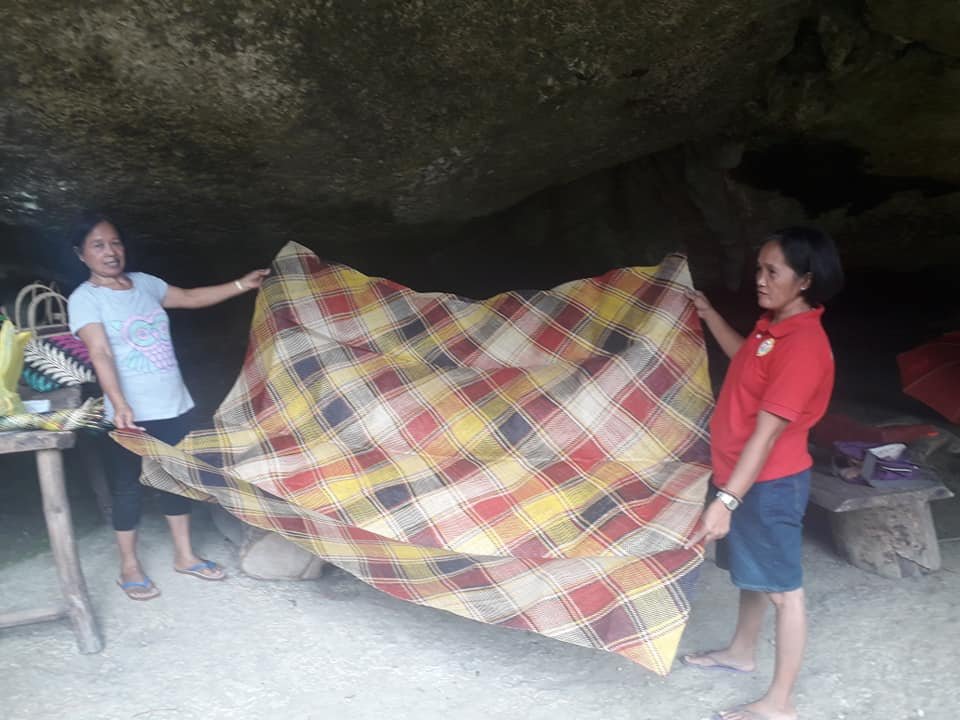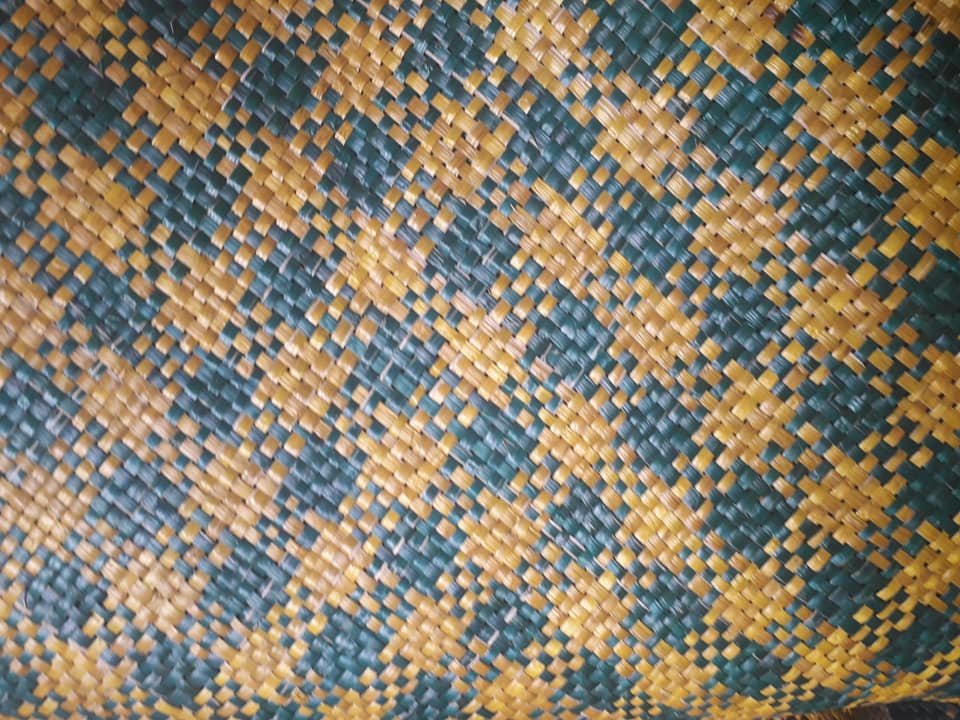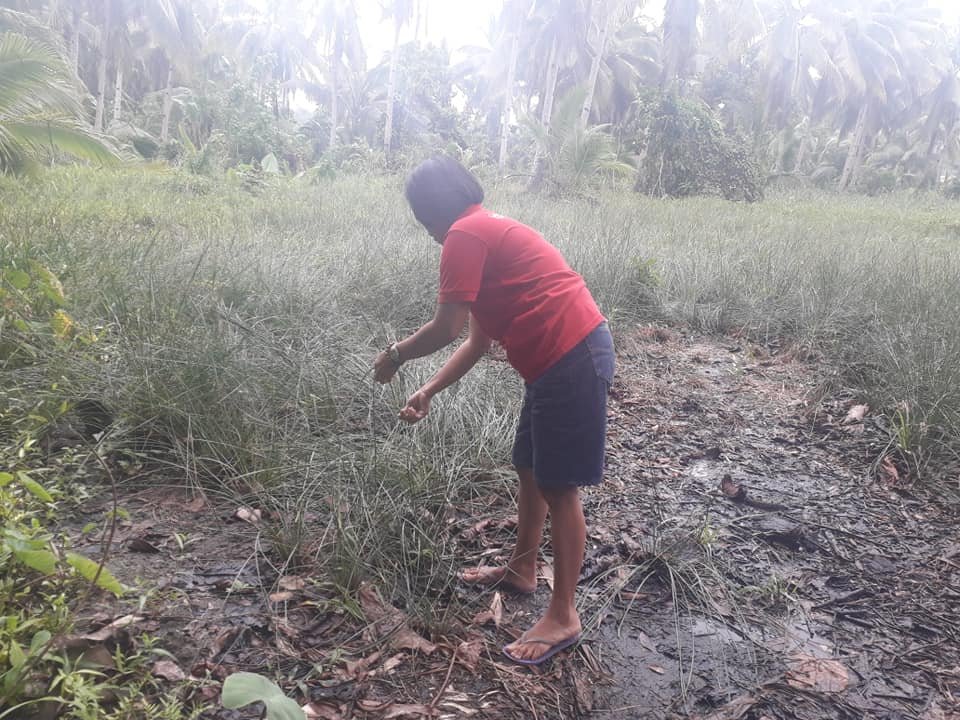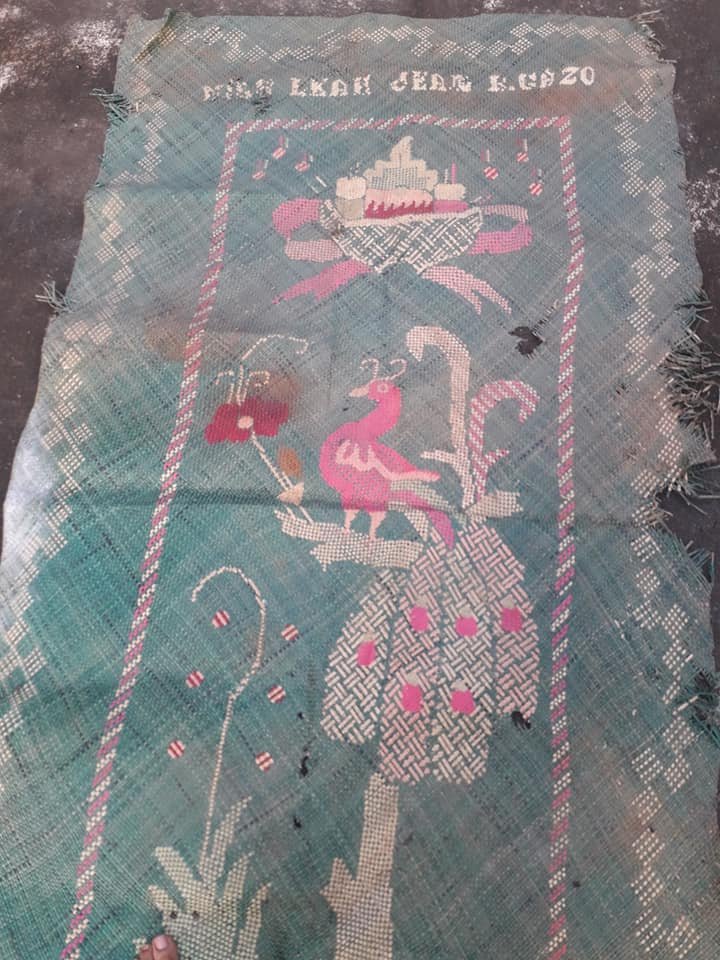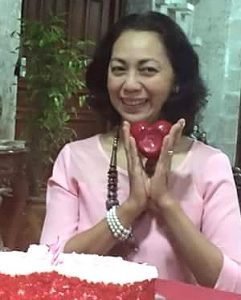The ominous rainy weather and dreary atmosphere when I was in Basey, Samar was nothing as long as I could get the chance to watch women in Basey’s Saob Cave weave their magic mats just as their mothers did before them.
I crossed the San Juanico Bridge from Leyte with Irene Magallon (Sta. Barbara’s Tourism Officer) to get to the other side with only one thing in mind – to visit the cave and see where my mother sourced the beautifully-made sleeping mat she brought me when I was a little girl. It is a grass mat with a green background embroidered mainly in pink to incorporate my name and mythical figures of a bird, a flower, a plant growing from the ground and what looks like (according to my friend Museo Pambata Director Maricel Montero) a birthday cake. The design is enclosed in a pink and white rope-patterned border that further embellished the mat.

The mat was rarely used after the family demolished our weekend home to make way for our current residential house. The mat used to be perfect for spreading over the bamboo floor during nap time for me and my childhood friends. We would be lulled to sleep by the sweet fresh sea breeze and the rustle of leaves of trees that surrounded the resthouse. Like all little children, I grew up and the mat was kept in the cabinet forgotten like the Velveteen Rabbit.
Lately, the mat became a sacred space that I would occupy during prayer time in an unoccupied room. I rediscovered it among the stuff in my cabinet and was brought to life from the cave of Nostalgia. It was, thereafter, a witness to my spiritual journey and caught the wax drippings of lighted candles as well as my tears. This year, I embarked on a physical journey to Saob Cave. It was also a mystical one as I tried to learn its secrets.

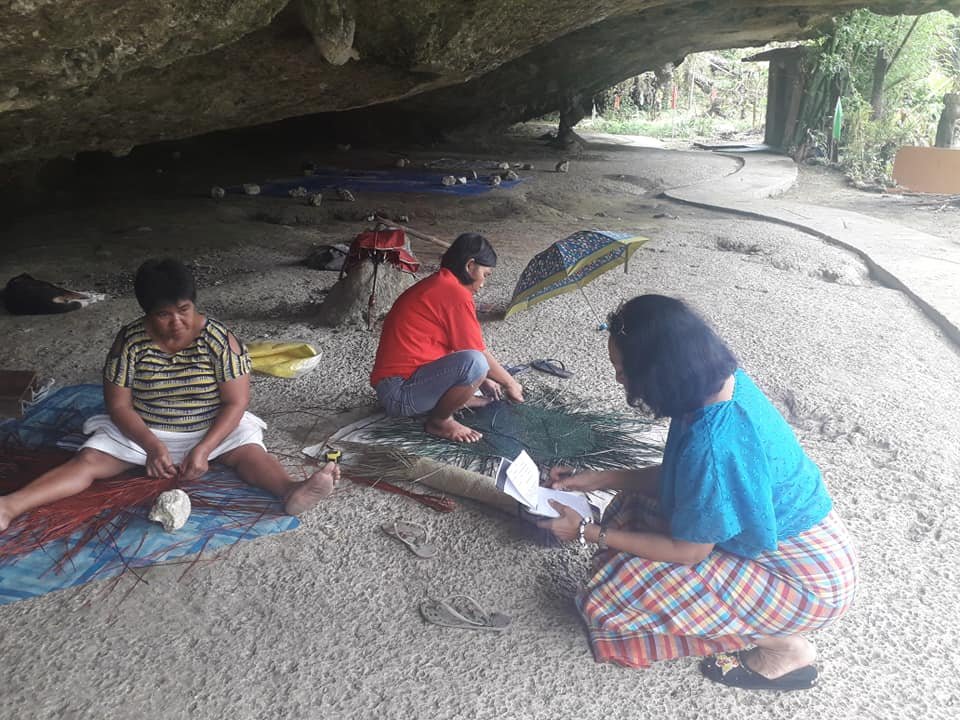
Just like the mats of Calatrava, Negros Occidental, the mats of Basey, Samar are woven inside a cave. A cave’s partly-dark, cool atmosphere keeps plant fibers moist and pliable. If mats are woven in the warmer climes outside a cave, the plant fibers become dry and brittle. Unlike the Calatrava pandan mats, however, Basey’s are made of tikog, a knee-high grass that grows in swampy areas. These are harvested, seeds removed, and dried for four days if the weather is hot. It takes longer, of course, to dry during rainy days. The women resort to air drying if it rains but they swear that nothing beats the sun to yield good quality strips with no mottling. The grasses are segregated according to length and bundled and trimmed to even out the edges. There are 200 blades of grass to a bundle, and it takes 8 bundles to make a mat. Whew! Did you know that it takes one week to weave one banig? And these banigs are sold from P600 to P800 depending on the size.
Banig patterns have names, I discovered. There is dama-dama that look like checkers, the mirubitoon that symbolizes stars, and the bug-os bug-os that seem like bundles. And the binagaybay that comes in big checkered patterns. I showed the ladies the magic mat my mother specially ordered for me and they said that their mothers must have woven that. What I did not ask them was whether they can make another one like it. It would be a great idea to have them copy the design so that when the old one gets more frayed, there is a ready replacement. Plain, checkered, or intricately embroidered, each mat becomes a treasure that carries the skills of generations of mat weavers. Let us not forget our indigenous artisans so that their craft carries on for centuries.
